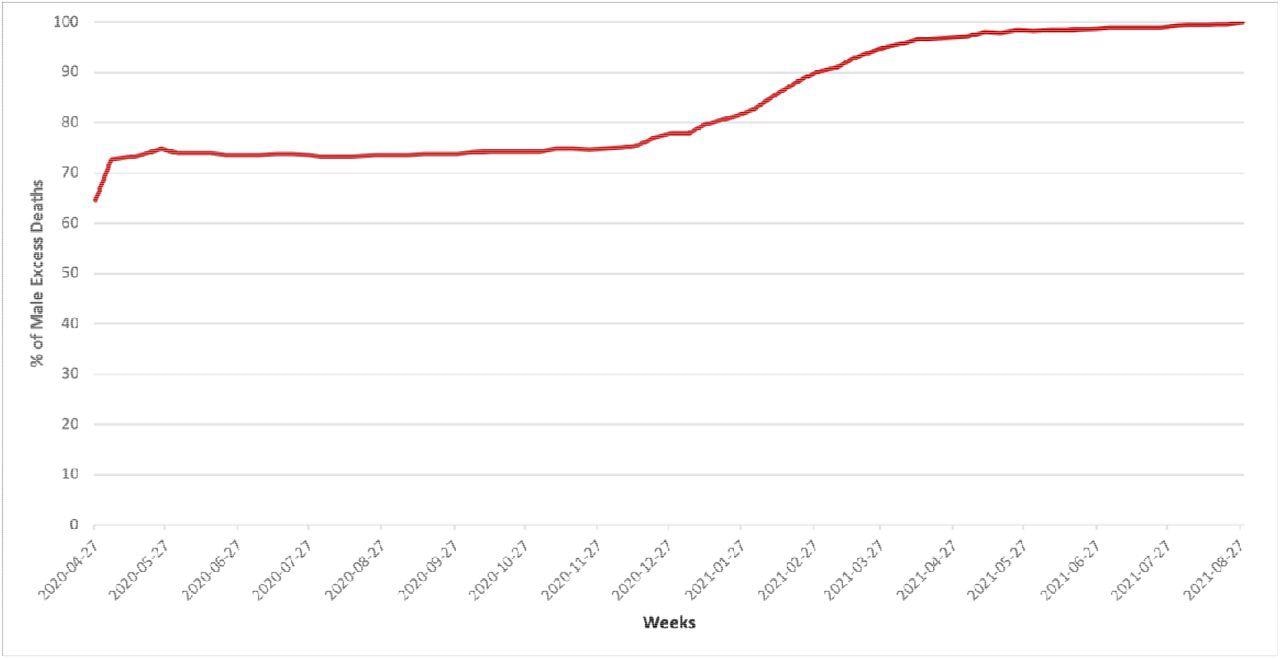
 *Important notice: medRxiv publishes preliminary scientific reports that are not peer-reviewed and, therefore, should not be regarded as conclusive, guide clinical practice/health-related behavior, or treated as established information.
*Important notice: medRxiv publishes preliminary scientific reports that are not peer-reviewed and, therefore, should not be regarded as conclusive, guide clinical practice/health-related behavior, or treated as established information.
Background
More men than women have died from COVID-19, with preliminary assessments showing almost double COVID-19 mortality rates among men than women. However, this sex disparity was assumed to remain stable over time and across contexts, supporting the notion that men are more susceptible to severe COVID-19. In the absence of evidence supporting this theory, it is of significant scientific interest to examine the variation of sex disparities in COVID-19 mortality over time.
The present study discusses the dynamics of mortality pattern variations across time and reveals how socioeconomic factors contributed to sex disparities in infectious disease outbreaks such as COVID-19. In this context, New York, despite accounting for 6% of the total United States population, contributed to 8% of the country’s COVID-19 deaths and 9% of total excess male deaths by September 2021. As a result, New York is the ideal location to assess the cumulative sex disparity in COVID-19 mortality in the U.S.
About the study
In the present study, researchers analyzed weekly sex-disaggregated COVID-19 mortality data from the U.S. Gender/Sex COVID-19 Data Tracker of New York from March 14, 2020, to August 28, 2021. This data included all individuals categorized as women or men who died from COVID-19 in New York, as reported by the New York State Department of Health.
The study was conducted across six different time periods throughout the pandemic and phases of the vaccination campaign in New York. To capture changes in COVID-19 mortality over time, mortality rates by sex and mortality rate ratios, both cumulatively and for each time period, were calculated separately, taking women as the reference population.
Mortality rates by sex were calculated by dividing the total number of deaths in each sex corresponding to the total population of New York and were reported per 100,000 people.

The proportion of the total difference between the number of male and female deaths that was accrued week by week between March 14, 2020, and August 28, 2021.
Study findings
In New York, between March 14, 2020, and August 28, 2021, 43,522 individuals died due to COVID-19, of which 19,227 (44.2%) were women, and 24,295 (55.8%) were men. The cumulative mortality rate was 255.71 for men, and 190.91 per 100,000 for women, corresponding to a mortality rate ratio of 1.34. This cumulative mortality rate of 1.34 decreased to 1.19 when the study period of May 5, 2020, to August 28, 2021, was excluded from the analysis.
During the initial study period of March 14, 2020, to May 4, 2020, the sex disparity in COVID-19 fatality was the highest, with the mortality rate among men being 1.56 times the mortality rate among women. Notably, 72.7% of the 5,068 excess deaths among men occurred in this period, creating a gap in mortality rates that continues to affect the cumulative sex disparity. While 44.1% of total deaths in New York occurred in this period, the mortality rate among women was 76.92, and the mortality rate among men was 120.33.
New York, particularly New York City, was hit by COVID-19 quite early and severely as compared to the rest of the U.S. Although COVID-19 fatality data was not available with demographic variables such as age, ethnicity, socioeconomic status, occupation, and comorbidity, these factors also affected sex disparities in COVID-19 mortality over time in New York. Subsequently, while only 53.1% of all COVID-19 deaths occurred in New York, New York City accounted for 80.7% of male excess deaths in this state during the pandemic.
The sharp decline in male mortality after May 4, 2020, suggested that the implementation of pandemic-control provisions and gendered behavioral, occupational, and structural factors are crucial in determining disparities in COVID-19 mortality.
The COVID-19 vaccination campaign began in New York on December 15, 2020. To date, women account for the majority of vaccine recipients in New York.
The relative increase in male mortality during the fifth and sixth study periods coincided with the second wave of COVID-19 in New York, as well as the large-scale roll-out of COVID-19 vaccines. Based on these findings, the researchers concluded that gender-linked vaccination patterns, age, occupation, health behaviors, and other social variables affected COVID-19 sex disparities, as did the gradual relaxation of pandemic provisions during the later time periods of the study.
Conclusions
Overall, the study findings demonstrate that in New York, an early and severely impacted global index site in the COVID-19 pandemic, sex disparities in COVID-19 mortality have not remained stable across time. COVID-19 fatality rates showed a sharp decline following the introduction of public health controls and the eventual roll-out of vaccines.
The study findings also suggest a critical role of gender-based behavior, occupation, and structural factors in driving sex disparities in infectious disease outbreaks, such as COVID-19. More importantly, the authors emphasized the importance of investigating temporal changes in the magnitude of sex disparities and addressing their underlying causes.

 *Important notice: medRxiv publishes preliminary scientific reports that are not peer-reviewed and, therefore, should not be regarded as conclusive, guide clinical practice/health-related behavior, or treated as established information.
*Important notice: medRxiv publishes preliminary scientific reports that are not peer-reviewed and, therefore, should not be regarded as conclusive, guide clinical practice/health-related behavior, or treated as established information.